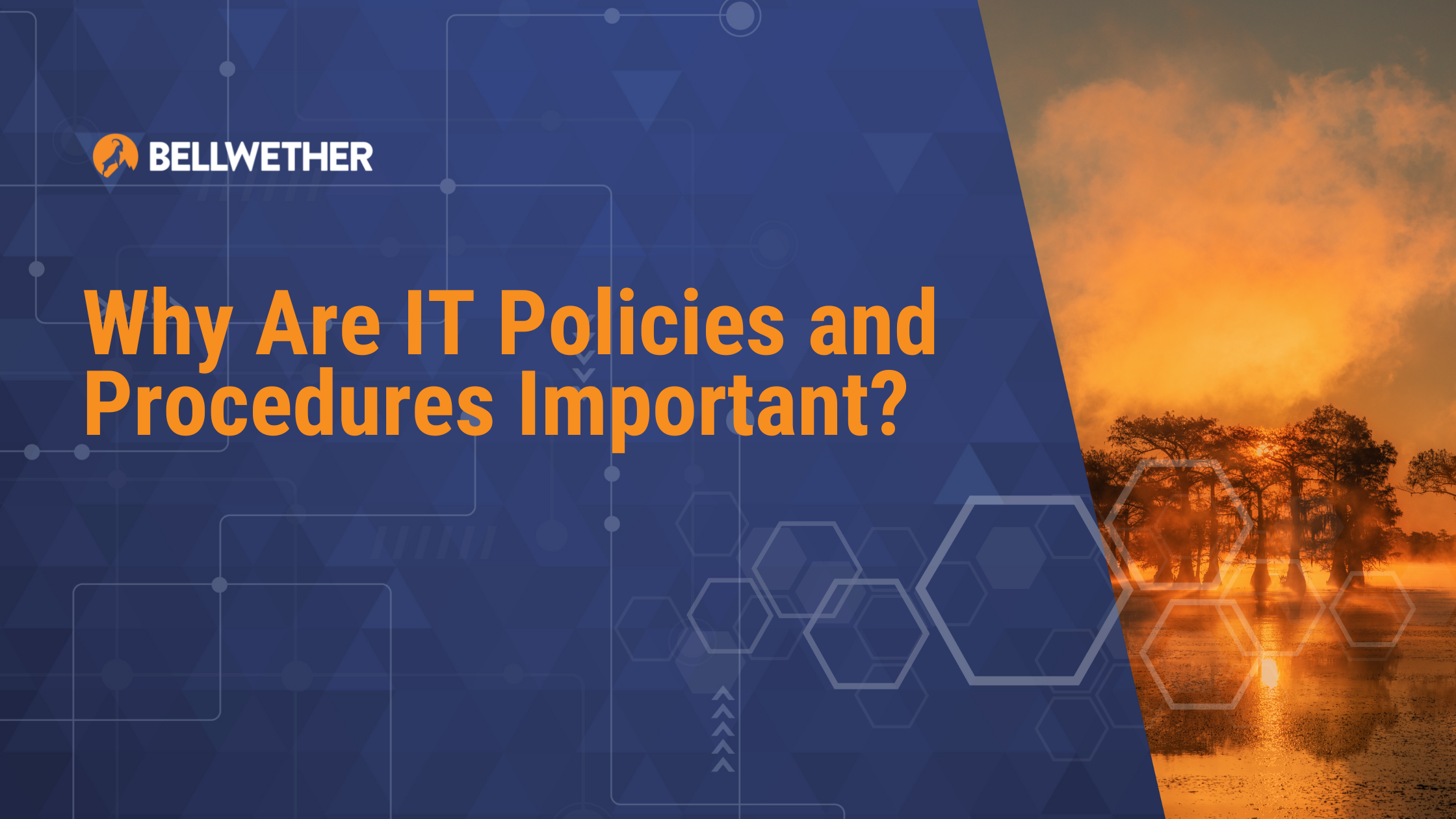
[Updated 2022] IT policies and procedures play a strategic and crucial role in making sure that your company’s corporate information is safe. Policies document how people and other IT systems can access your data and network. Policies and procedures work together with your technical security controls to protect confidential information from unauthorized access, disclosure, corruption, loss, and interference in both physical and electronic formats.
When it comes to protecting information, maintaining privacy is just one aspect of security. You also need to be concerned with the information’s accuracy and your ability to access it when you need to. In IT terms, we refer to these three types of data protection as:
- Integrity – Preserving the consistency and accuracy of information.
- Confidentiality – Preventing unauthorized access to information.
- Availability – Ensuring that the appropriate people can get to information when they need it.
These three attributes guide the creation of standard policies and procedures in the domain of IT. As we go into more detail about what these documents contain, you’ll get a better idea of the role they play in cybersecurity strategy.
What Kind of Policies Do Small Businesses Need?
You probably have several basic types of policies and procedures in your employee handbook right now. However, if employees don’t know about them and they’re not enforced, then they’re not going to do much good.
On the other hand, when employees are trained to follow policies and procedures; they receive periodic refreshers; technical measures are used for enforcement when available; and there are consequences for not following policies, then this non-technical part of your security strategy will be a major contributor to the safety of your information.
Check to see if you have any of the following policies and think about how you’re enforcing them. Keep in mind that these are examples and not a complete list of all the policies that you need in a comprehensive cybersecurity strategy.
Acceptable Use Policy
This policy sets out parameters for how employees may and may not use the company’s technology assets, including internet.
Identity Management Policy
You may have this in your current handbook as “Password Policy” but with the use of Multi-Factor Authentication (MFA) it’s necessary to go beyond passwords. This policy details the procedures employees should use to access their company and online accounts.
Data Access Policy
Access to information should be controlled by policies that classify data by its type and sensitivity, and allow access according to job role.
Related: Learn about the Principle of Least Privilege
Email Policy
These policies detail expectations and limits on how employees can use and access company email, including what devices they use.
Remote Access Policy
This policy instructs employees on how they may and may not connect to company IT systems. It also includes how to handle requests from vendors when situations arise when they need to do work on your IT systems.
Incident Response Procedures
Everyone should know what to do if they suspect a cyber intruder. If the suspicion turns out to be an actual attack, then having a plan in place will facilitate your response.
What Happens If You Don’t Have Documented Policies and Procedures
Without any documented policies, every contractor and employee will act according to their own understanding of how they should access data and IT systems. This will lead to havoc and inconsistency in operational tasks not to mention vulnerabilities in your security posture.
As accountability for security continues to grow, and customers demand to know how you’re going to protect the data that you gather and store for them as you do business together, it’s likely that you’ll have to get serious about creating and enforcing IT policies and procedures really fast.
How Do You Create IT Policies and Procedures?
There are many sources for security policy and procedure templates on the internet but documenting the behaviors that will actually control access to data is more complex than copying some paperwork. Policies need to address your unique operations and sometimes you’ll discover that you’re going to have to change operations to meet the requirements of the policies you need.
A template is a good starting place, but many companies find that they need the guidance of their IT support company to complete the process. In fact, your managed IT services company should be involved because they will need to recommend and implement technical controls that will be a component in enforcement.
Technical and Non-technical Cybersecurity Layers
Your cybersecurity strategy should include both technical and non-technical layers, and that includes policies and procedures. Most companies need guidance to create a cybersecurity strategy that pulls everything together and meets your company’s risk tolerance and budget.
Related: 5 Benefits of Technology Strategy
Working with a managed IT service provider like Bellwether, gives you access to executive-level consulting through the services of a vCIO or vCISO. When you have a strategy along with a comprehensive team to deliver services, you’re positioned to use technology to meet your goals and effectively manage cyber risk.
Bellwether Managed IT for Gulf Coast Businesses
Our clients come to use because they don’t just want to take IT off their plate, they want to leverage technology. If your current managed IT services provider isn’t helping you do that, it’s time to weigh your options.